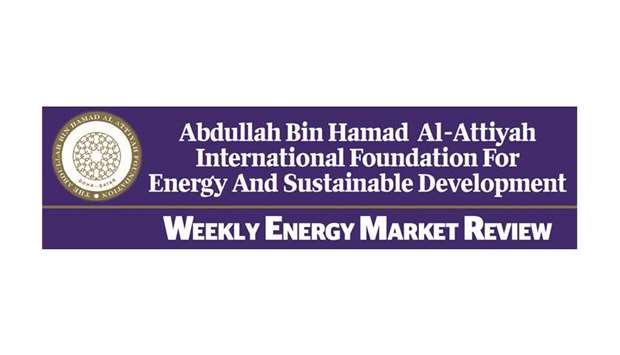
BENCH
Oil
Benchmark crude futures continued their decline last week, impacted by a market sentiment fearing a deteriorating fundamental picture. Rising global supplies, especially from the US, combined with a likely slowing of demand are believed to potentially bring back a market glut. In the week to August 10, US crude stocks increased substantially by almost seven million barrels, while US crude production increased by 0.1 mbpd to reach 10.9 mbpd. It is thought that the outlook for crude demand is weakening, due to the pressure from slower economic growth driven by the trade disputes and dwindling emerging market currencies. However, the market was still boosted due to the US sanctions on Iran targeting the financial sector this month and Iran’s oil sector next November. Some Asian customers already reduced their orders, which is thought to reduce Iranian crude exports by 0.5 mbpd this quarter.
Crude oil futures remain at relatively reasonable levels for global economic growth, but the downside risks are increasing dramatically. Benchmark crude futures are close to their support levels, which are $65 for WTI and $70 for Brent. A deteriorating global picture, if confirmed, would lead prices to break these support levels and eventually put them on a downward trend.
Gas
Asian spot LNG prices for October delivery rose above $11 per mmbtu, being just half a dollar short from this year’s high. Prices were supported by a strong demand driven by the harsh 2017-2018 winter season and the heatwave this summer in large parts of Asia.
The first purchases for the coming winter indicate an outlook that may maintain the same trend. South Korean utility company, Kogas, is believed, by multiple sources, to have concluded talks to buy between 12 to 20 cargoes over the next winter. Traders expect Japanese LNG imports to remain robust until the end of this quarter, while Chinese appetite is set to moderate due to earlier purchases this summer and relatively low storage capacities. Meanwhile, Cheniere started the commissioning phase of its first train at the Corpus Christi plant in Texas, which will become the third US LNG export plant by the end of this year. A wave of 36 mtpa of US export projects is expected by 2019 to hit the market, which represents around 12% of 2017 global LNG trade.
In the US, Henry Hub natural gas futures remained steady amid a choppy evolution during the week. Injections into storage have remained below average for seven straight weeks. Thus, inventories are consistently below the five-year average despite daily output reaching an all-time high of 82.7 bcfd last week. In the UK last week, gas futures rose by more than 5% continuing a four-week rally streak. Maintenance at the Norwegian gas field Troll is expected to end in early September, impacting negatively Norwegian flows to the UK. Strikes at Total’s platforms in the North Sea this Monday is also expected to impact the supply. However, forecasted higher wind energy output can lower the gas for power demand.
n This article was supplied by
the Abdullah bin Hamad
Al-Attiyah International Foundation for Energy and Sustainable Development.
